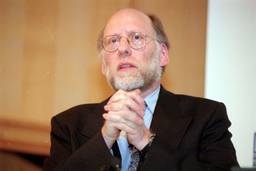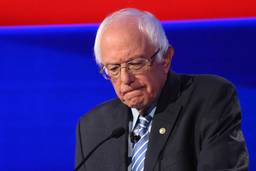As long as we are dreaming of the near impossible — the reinstitution of the concept that the airwaves are a resource that belong to us all — let’s go whole hog, and imagine something else — the reinstitution of the Fairness Doctrine. Sure, this will never happen as long as the Republicans control Congress and the White House. But just as few Republicans, in the dark post-Watergate days, dared to dream that one day the voices of the far right would dominate talk radio and much of public affairs programming on television, progressives now need to dream of reversing this, and to back up that dream with a long-term battle plan.
Why does the Fairness Doctrine matter? It was, of course, the very concrete deregulation of ownership restrictions that began under Reagan’s FCC Chairman Mark Fowler, and then the Telecommunications Act of 1996, that paved the way for massive consolidation. But it was the elimination of the Fairness Doctrine in 1987 that created an ideological field that would, in fact, justify and celebrate this deregulation. Everywhere, there was a chorus of voices that demonized government oversight of pretty much everything, especially the broadcasting industry, and that promoted “the market” as the only way to “give the people what they want.” Utterly marginalized in the post-doctrine landscape were the voices of women (except for right-wing blondes), people of color (except for anti-affirmative action folks and/or those on the payroll of the government) and not only progressives, but even liberals.
The basic principle of the Fairness Doctrine — that radio and television stations have the obligation to address all sides of public controversy during the course of their broadcasting — was implied in the Communications Act of 1934, and then formalized in 1949. In practice, the Doctrine was meant to do two things: require stations to cover controversial issues of public importance and provide differing viewpoints on such issues. It was meant to prevent stations from broadcasting a single ideological perspective, day in and day out, without opposing viewpoints.
The free marketeers in the Reagan administration argued that broadcasters had the right to broadcast what they wanted, when they wanted, free of government guidelines. In August 1987, the FCC simply announced that it would no longer enforce the Fairness Doctrine. Congress responded in September by passing a bill that would have reinstated the doctrine — it passed the House by a margin of 3 to 1 and the Senate by a margin of 2 to 1. Reagan promptly vetoed it. There has been no Fairness Doctrine since.
Now, it’s not like the broadcasting of yore was filled with the diverse voices of progressives, feminists, people of color or community activists. We should not impose an artificial nostalgia on the past. But the conservative argument that most FCC regulation was ineffective in the past and thus unnecessary now does not speak to the present moment, nor is it correct.
Let’s pick just one example. In 1946, the FCC, in an effort to bring more diversity to the air, reduced the required bandwidth distance between stations, thus allowing more stations to inhabit adjacent frequencies. As a result, between 1946 – 1951 the number of small stations between 200 – 1,000 watts increased by 500 percent and much of the music, public affairs and talk on these stations reflected more local, grassroots interests. Some began catering to the black audience, newly discovered as a “market.” The result? By the mid-’50s, radio was the least segregated of all the mass media, giving air time to black artists and, slowly but surely, putting black DJs on the air.
Critics argue that the Fairness Doctrine was confusing to stations and citizens alike, and that it was expensive and time-consuming to enforce. Maybe so. But its demise has been a disaster. Of greatest concern to most of us is, of course, the onslaught of conservative opinion, particularly on the radio, that remains unanswered and unchallenged. Right-wing evangelical broadcasting has metastasized, vilifying their favorite demons without any fear of contradiction or response. It is hardly surprising that Rush Limbaugh opposes the Fairness Doctrine on a regular basis — where would he be without its elimination?
Public affairs and news programming have also been crippled by the death of the Doctrine. According to a study by the Benton Foundation, as reported by Steve Rendall in Extra!, 25 percent of broadcast stations no longer offer any local news or public affairs programming.
Restoration of the Fairness Doctrine is hardly a panacea. But regulation — or deregulation — and ideology have always gone hand in hand, one justifying the other. Ongoing media consolidation, and the censorship and pro-right blather that go with it, are sustained by the silencing of oppositional voices Americans are no longer required to hear. But it turns out Americans do want to hear these voices: A 2004 poll showed that 77 percent of respondents supported reinstating rules requiring fairness and balance on public airwaves. It’s time, as they say in the business, to give the people what they want.
Susan J. Douglas is a professor of communications at the University of Michigan and a senior editor at In These Times. She is the author of In Our Prime: How Older Women Are Reinventing the Road Ahead.









